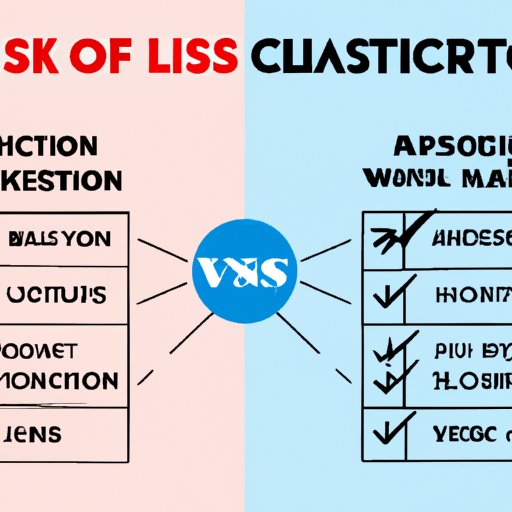Introduction
Laser eye surgery, also known as Lasik or laser-assisted in situ keratomileusis, is a popular vision correction procedure. It is used to correct common refractive errors such as nearsightedness, farsightedness, and astigmatism. Lasik has been around for over 25 years, and today it is one of the most commonly performed elective surgeries in the United States. But is it really worth it? In this article, we will explore the pros and cons of Lasik to help you decide if it is the right choice for you.
Interviews with Lasik Patients
To get an idea of what it’s like to go through Lasik, we interviewed several patients who had undergone the procedure. Most of them reported that the procedure was quick and relatively painless. They also noted that they were able to see results almost immediately after the surgery. While there was some discomfort initially, most of them said that it was manageable and subsided within a few days.
The patients we spoke to had mixed reviews when it came to their overall experience. Some reported feeling satisfied with the outcome and would recommend it to others. Others felt that the results weren’t quite what they expected and had some lingering side effects, such as dry eyes and light sensitivity.
Cost Comparison
Lasik can be expensive. The average cost of the procedure is around $2,000 per eye, but it can range anywhere from $1,500 to $4,000 per eye depending on the type of procedure and your individual needs. When compared to the cost of traditional glasses and contact lenses, however, Lasik may be a more cost-effective option in the long run.
For example, a pair of glasses can cost anywhere from $50 to $400, while disposable contact lenses can cost up to $200 per year. Over time, these costs can add up. Lasik, on the other hand, is a one-time cost that can save you money in the long run.
Long-Term Outcomes
When it comes to long-term outcomes, most patients report being pleased with their results. Lasik typically provides excellent vision correction, and the majority of people who undergo the procedure experience 20/20 vision or better. Some patients even report improved vision quality than before the surgery.
While Lasik can provide excellent vision correction, there are still some risks associated with the procedure. These include possible side effects such as dry eyes, light sensitivity, and glare. In rare cases, Lasik can also cause long-term complications such as undercorrection, overcorrection, and regression.
Risks Associated with the Procedure
In addition to potential side effects and long-term complications, there are some other risks associated with Lasik surgery. These include infection, scarring, and loss of vision. While these risks are rare, it’s important to be aware of them before deciding to undergo the procedure.
Lasik is also not suitable for everyone. People with certain conditions, such as diabetes or autoimmune diseases, may not be eligible for the procedure. Additionally, Lasik is not recommended for people under the age of 18, as their vision is still developing and may be subject to change.
Finally, it’s important to consider the recovery time associated with Lasik. While most people only need a few days to recover, it can take up to six months for the eyes to fully heal.
Types of Lasik Surgeries
There are three main types of Lasik procedures: Wavefront Lasik, IntraLase Lasik, and Custom Lasik. Each type has its own advantages and disadvantages, so it’s important to talk to your doctor to determine which one is best for you.
Wavefront Lasik is the most common type of procedure. It uses advanced technology to create a 3D map of the eye and then use lasers to reshape the cornea. IntraLase Lasik is another popular option. It uses a femtosecond laser to make a thin flap in the cornea before reshaping it with an excimer laser. Finally, Custom Lasik uses wavefront technology to create a personalized treatment plan for each patient.

Vision Quality and Lifestyle Changes
Most people who undergo Lasik experience improved vision quality almost immediately after the procedure. This can lead to increased confidence and an enhanced quality of life. Additionally, the freedom from glasses and contact lenses can make everyday activities, such as playing sports or going swimming, much easier.
Conclusion
Lasik is a safe and effective way to correct vision problems. However, it’s important to weigh the pros and cons before deciding if it’s right for you. Talk to your doctor about your individual needs and whether or not Lasik is the best option. With the right information and a qualified doctor, Lasik can be a great way to improve your vision and quality of life.


